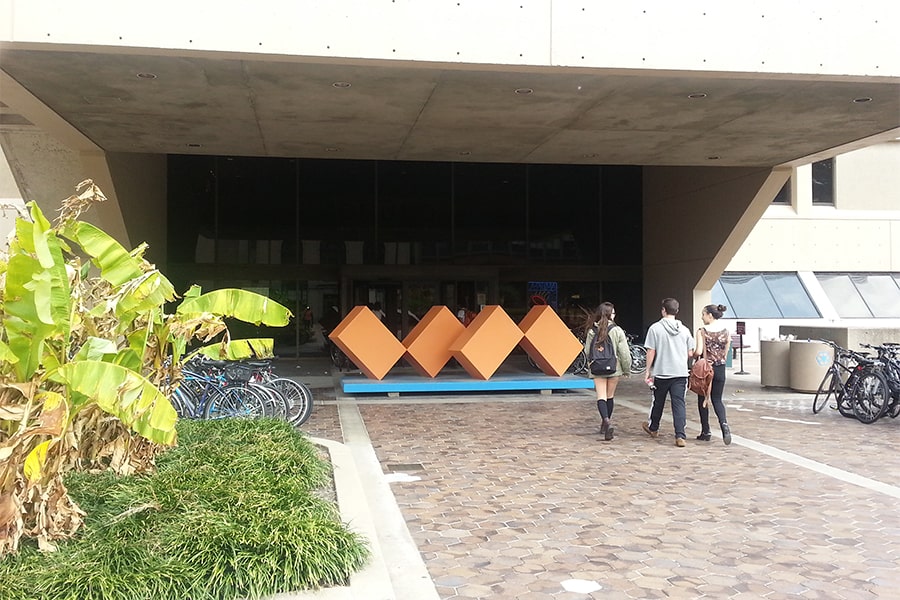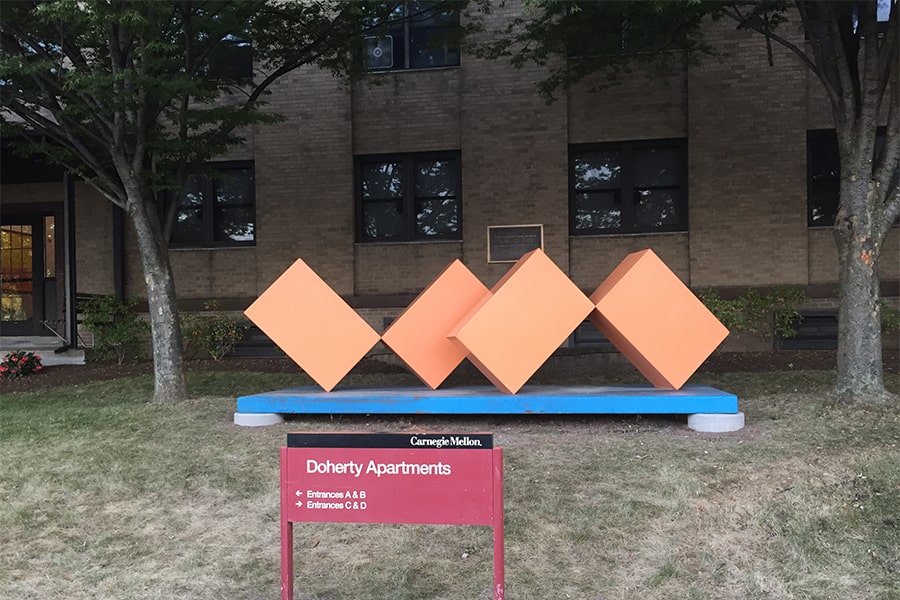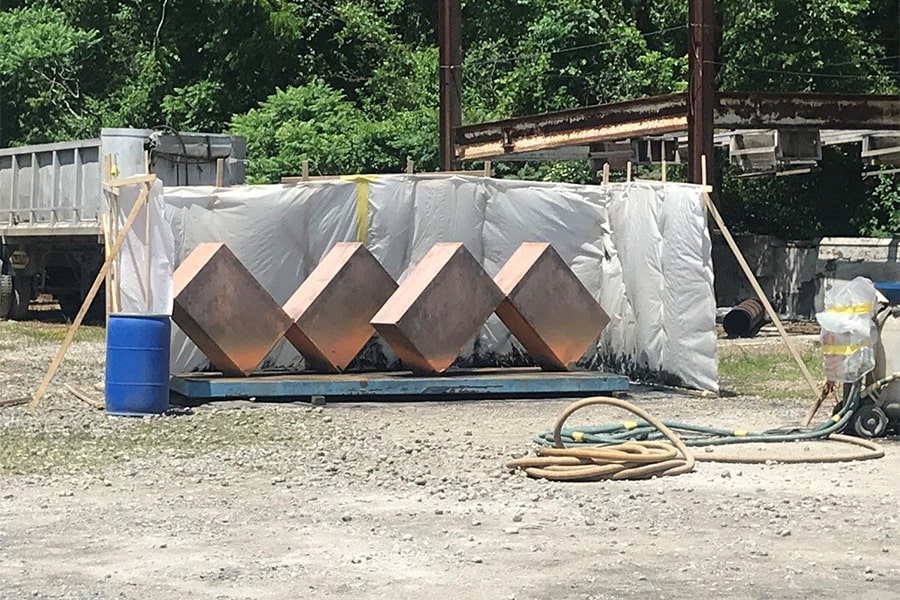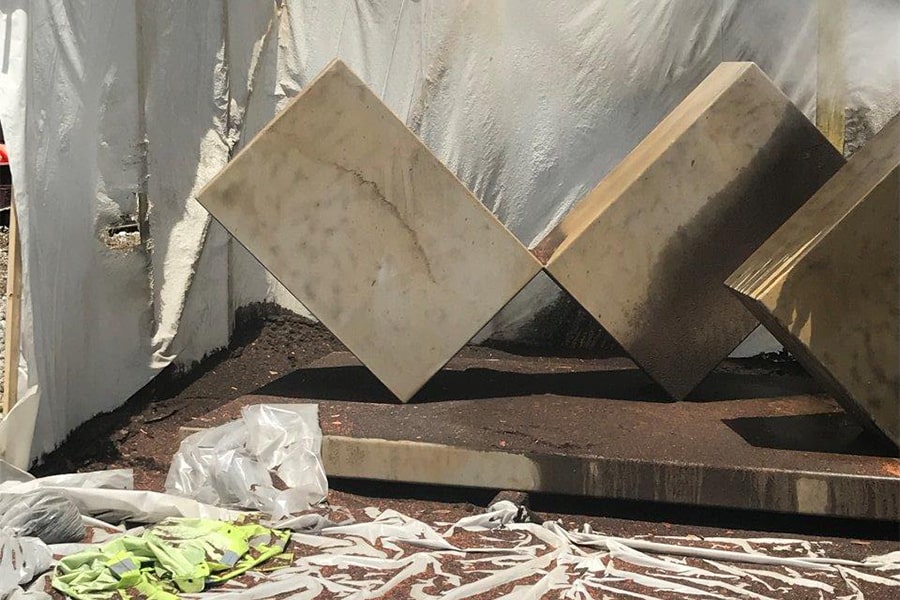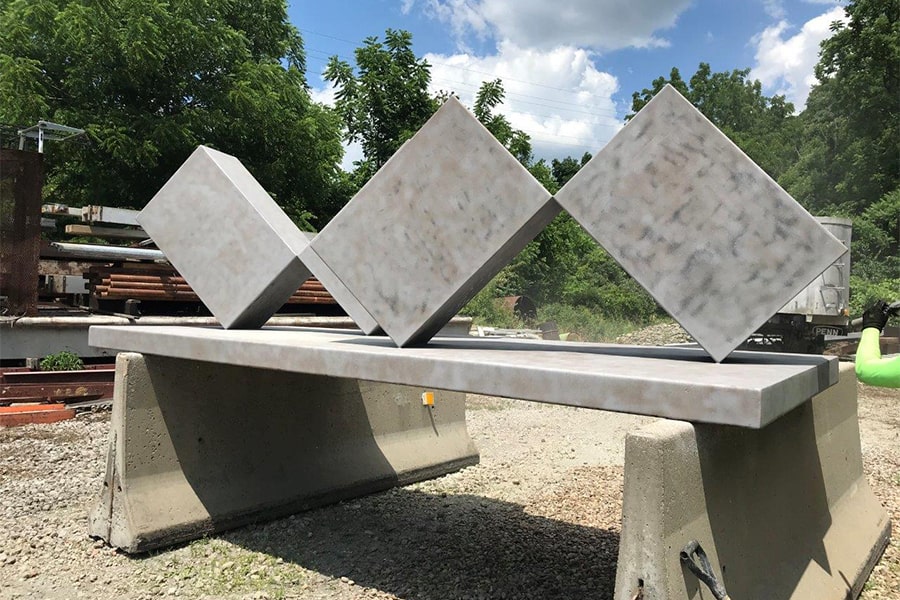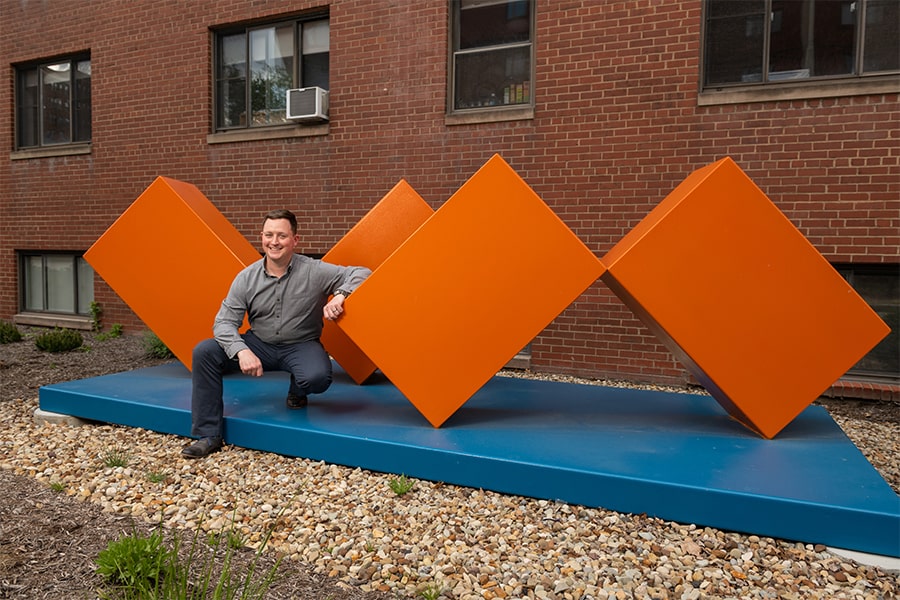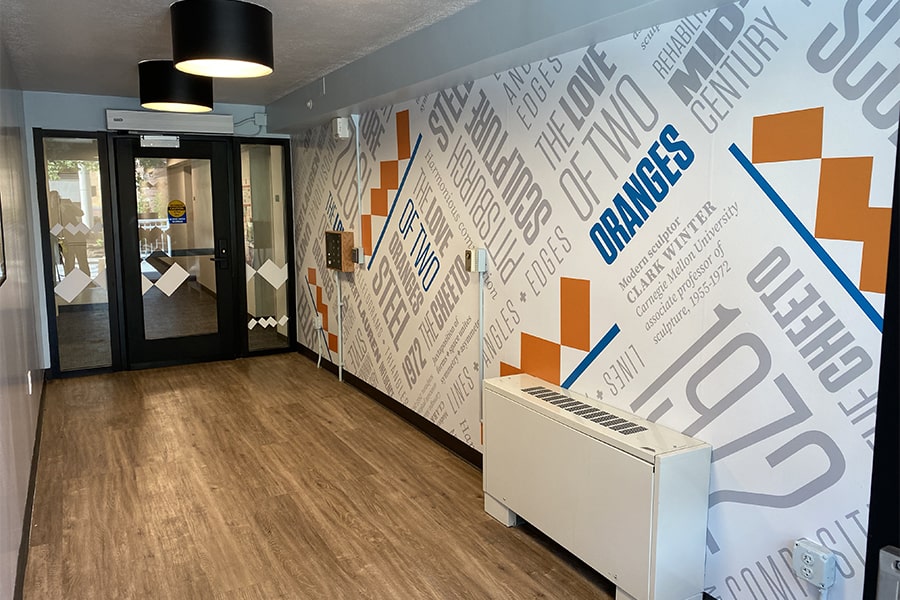For The Love of Two Oranges
By Kelly Saavedra
An iconic steel sculpture that has sat on Carnegie Mellon University’s campus since the early 1970s has been rescued, restored to its former glory and given a new home.
“The Love of Two Oranges,” four orange rectangular blocks and the resulting parallelograms and triangles that they enclose, was created in 1969 by Clark Winter, an artist and professor of sculpture at the university. In 1972, it was officially placed at the 5th floor entrance to Wean Hall where it would sit for the next 40 years. When construction of Scott Hall required the sculpture to be moved, the Public Art Committee and Housing Services agreed to move it to the forecourt of Doherty Apartments.
“Students loved it!” said Bob Reppe, senior director of planning for Campus Design and Facility Development (CDFD). “The residents of Doherty Apartments adopted the sculpture as their totem and christened it ‘the Cheeto.’”
Unfortunately, this is where the Cheeto started to crumble.
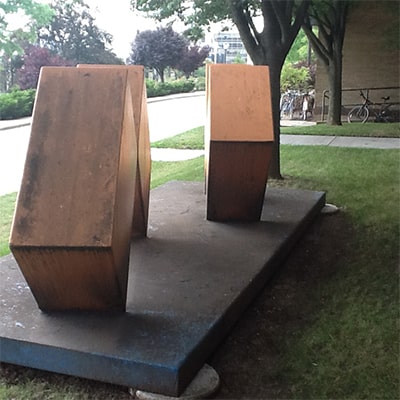
“We sat it underneath the trees without realizing the trees in that location dropped highly acidic berries,” Reppe said. “Those little berries fell on the poor oranges for several years and completely destroyed the finish.”
But every good story has its hero — or heroes — and that’s where Chris Deely enters the picture. A cabinet maker, ship restorer, retired ski patroller and all-around Renaissance man, Deely was hired as an engineering and construction project associate with CDFD, a kind of “catch-all” person, in late 2019.
“The sculpture restoration was unusual in that it was the first time I’d worked on public art. But as far as requiring creative problem-solving and collaboration, it was a project that landed right in my wheelhouse,” he said.
Deely was dogged by two competing challenges throughout the project: determining the sculpture’s original paint color — it had been repainted several times — and navigating the pandemic at every turn. He reached out to a number of construction professionals and a few museums in New York City trying to decide on the best approach to take. He even consulted his aunt, Nicole (Cooke) Kelly, who was a student when the sculpture debuted on campus.
“I think early on it was assumed that we could either locate records describing the original color, or, failing that, potentially re-paint the sculpture the same color it had been most recently. But the paint was in such bad shape, there was no way to accurately match the top layer. It was covered in tree sap,” he said.
"It was a project that landed right in my wheelhouse."
— Chris Deely
Some large sections of the paint had peeled back all the way to the steel. Deely was able to carefully shave down through multiple shades of orange in a paint chip to expose enough area of the original, very bright base color and match it.
“Bob and I went back and forth dropping off paint samples in Ziploc bags on each other’s front porches and sanitizing everything,” he said. “A pandemic was not the ideal time to be doing something like this, but we got it done.”
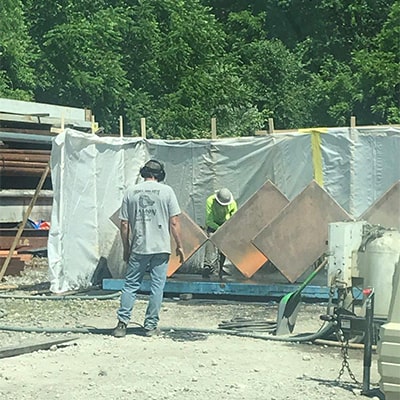
They determined the original color had likely faded in the sun over the 10-12 years before it was first repainted, and subsequent re-painting efforts likely involved simply matching the visible, faded color.
“The end result is strikingly different than the more recent lighter shades. I’m very happy the original color has been restored, reflecting the intent of the artist,” Deely said.
Art in public spaces has always been integral to the design of CMU’s interior and exterior spaces, engaging members of the campus community, invigorating otherwise unremarkable spaces and reflecting the innovative and diverse cultures of the region.
“It’s one of the university’s core principles and the lens through which we review everything we do on campus,” Reppe said.
Art in public spaces has always been integral to the design of CMU’s interior and exterior spaces.
Jan Held, CDFD's project manager on Fifth Neville, as well as Tom Cooley, director of Housing Services, and others played key roles that were critical to the success of the restoration:
- Keith Geisler from PPG Paints helped match paint colors and provided expertise on paint technology that will help protect the underlying steel of “The Love of Two Oranges” from exposure for years to come.
- John Wattick and Derrick Hays from Mosites Construction removed the sculpture from Doherty Apartments prior to that building’s demolition, stripped and repainted the work offsite and then delivered and installed the sculpture at its new home.
- Rob Borland, Katey Andaloro and Ken Brace from Jendoco Construction poured the concrete footings and helped position the sculpture around existing underground utilities.
“The Love of Two Oranges” now captures the viewer’s eye along Fifth Avenue against the backdrop of Fifth Neville Apartments.
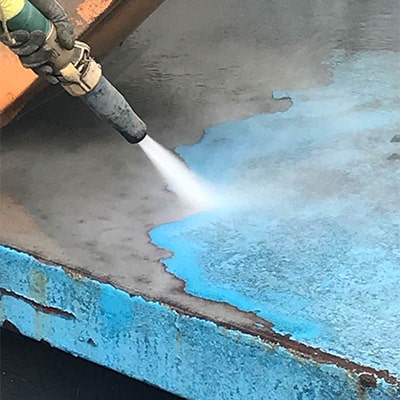
“I come from a family that treasures old things,” said Deely, whose mother still owns a spinning wheel that crossed the Appalachian Mountains with her family in the 1700s. He has a studio art degree from Carleton College, and given his background and interest in cabinetmaking, he is often asked to help preserve and occasionally restore furniture. For a while, he worked on restoring tall ships, the most memorable being a 140-year-old Portuguese fishing barquentine.
“I definitely respect and appreciate the original intent of artistic objects and how they can change, often inadvertently, throughout history,” he said.
No one can say Deely’s heart wasn’t in the work. Not only is his aunt an alumna, his late grandfather graduated as an electrical engineer and his uncle graduated with a degree in physics from the university back when it was known as Carnegie Tech. His grandfather's two sisters also graduated from Margaret Morrison Carnegie College, which was part of Carnegie Tech.
“I just love working on this campus,” he said. “In many ways, it feels like coming home.”
